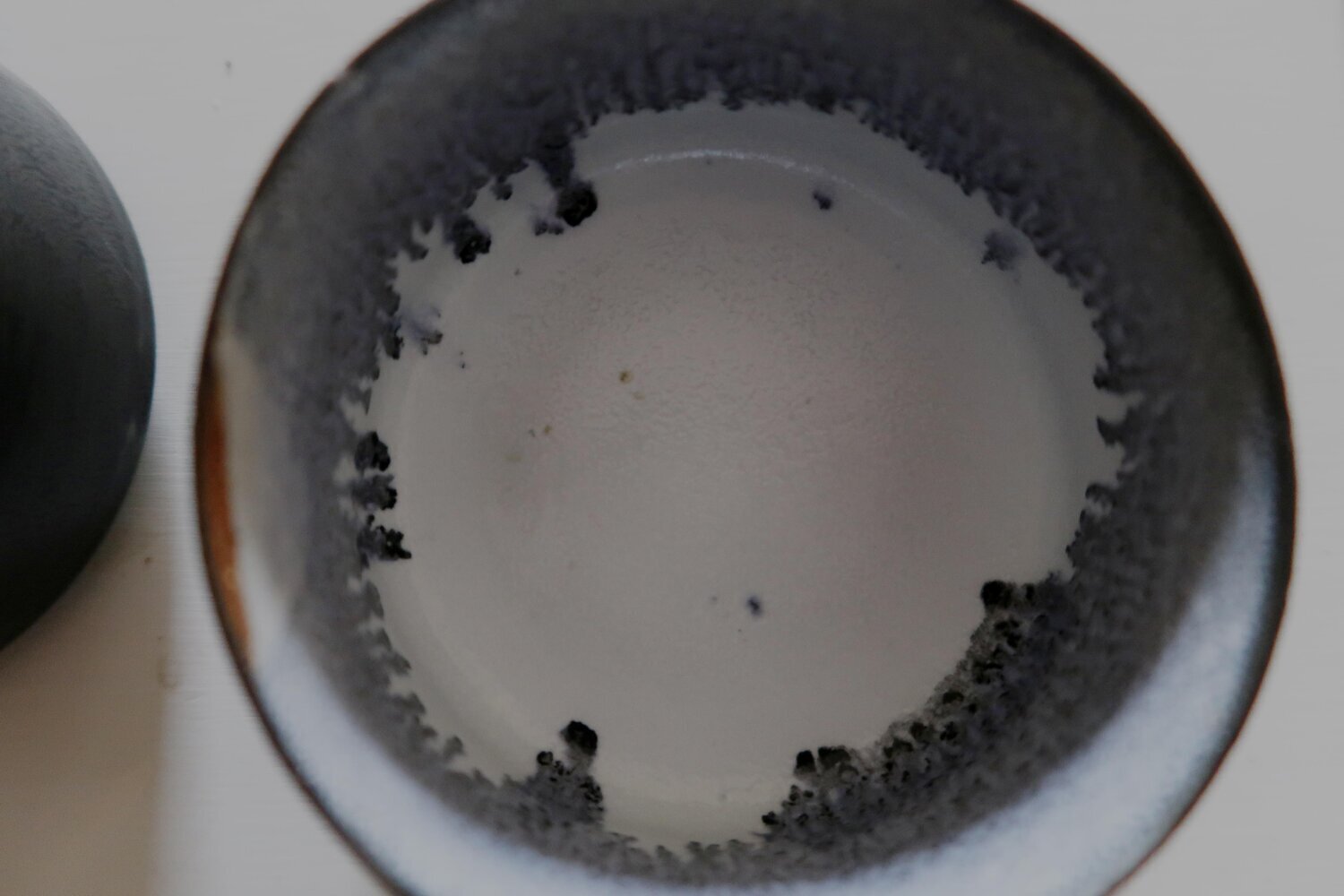1.
INFO
2. CURRENT
3.
PAST WORK
4.
APPROACH
5.
RESEARCH
6. BOOK!
︎︎︎ Join my newsletter
︎ View the full site on your desktop browser
VESSEL OF WHAT
Online shop of hand-thrown pottery2019
Shop here.

ABOVE: Pottery thrown, glazed, bisqued, and fired at Roswell Clay Collective.
“I’m here writing this because I am one of the many who have a hunch about the way (material) things and people are related. I had just had a conversation about romantic relationships last week with a couple of old friends asking, ‘How do you know when you’re overworking things to keep a relationship together, and not just being invested, engaging all the options? How do you know when to let go? To stop?’ Most of the time, we’re all just clunky people, trying to figure out what we’re about and how to move about in the world. It’s a hard question to answer.
This week marks my sixth week being a pottery and wheel throwing student. Six weeks ago, I had a hunch when I leaned in to apply force to center the lump of clay on the spinning wheel for the very first time that there was something I would understand from using the wheel in front me. I’d learn something beyond getting the clay to do what I want it to. When first starting with wheel throwing, you’re meant to finish ‘pulling’ the clay to the height and width you want in no more than four pulls up from the bottom. A fifth, six, seventh, anxious pull on the spinning wheel means the clay is overworked, full of weak spots, and on the brink of collapse—a horrifying experience that takes getting used to.
This morning in the pottery studio I felt “in-action,” (Schön, 1984) the moment before the clay was about to become too tired. Working on the clay taught me about stopping. When to stop. It’s a kind of demarcation you need to learn for yourself, in a bodily, felt kind of way. It’s a sensibility and degree of attentiveness. It is concerned with a person’s spirit. I’m someone who’s always had faith that wrangling with material things is tied to knowing. Here in this paper with Ricardo, I’m asking myself—after ten years of formally investigating making and emotional well-being—what am I trying to say about our interior lives and how we affect others around us?”
—Myriam D. Diatta, Excerpted from A Family of Sensibilities